“Teeth and Gum: Discover top 8 secrets to reverse gum recession, boost oral hygiene, and achieve healthier, stronger gums.”
Table of Contents
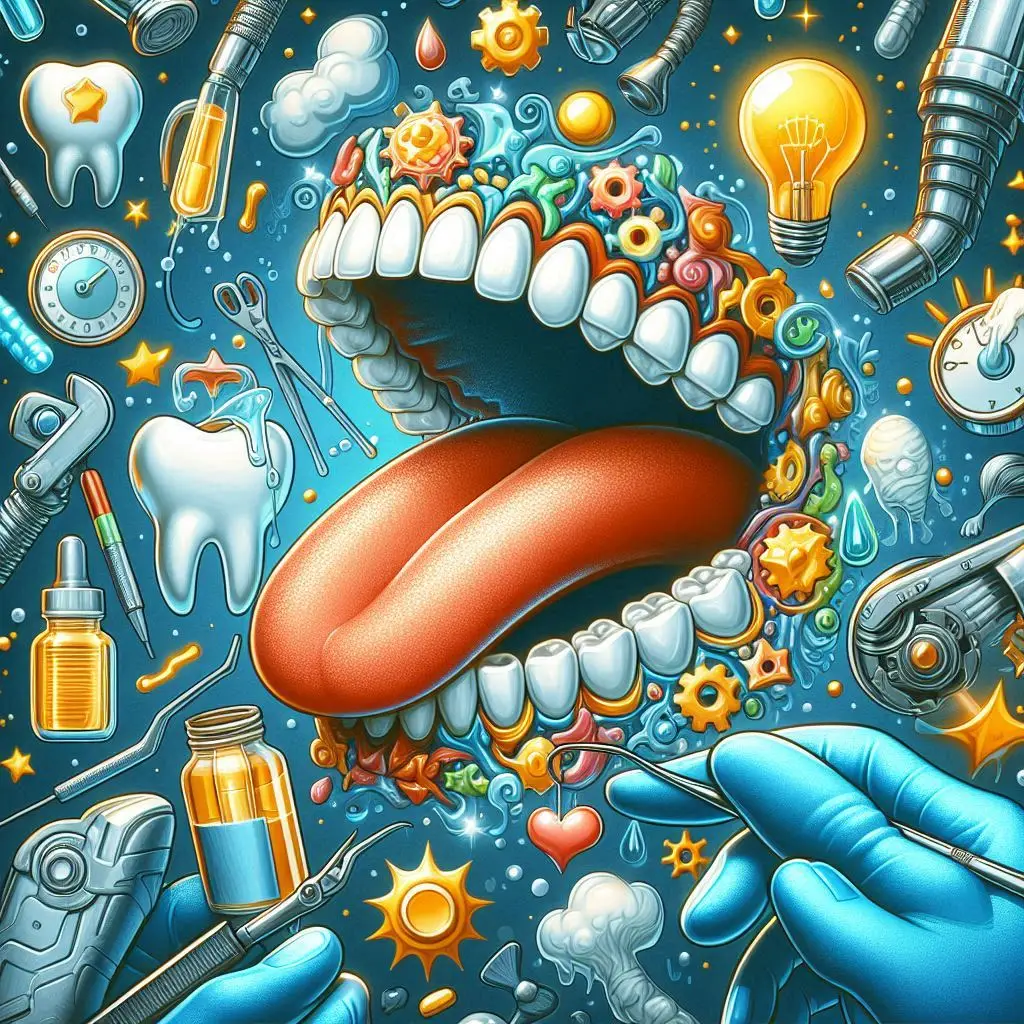
Teeth and Gum: 8 Proven Tricks for Strong, Bright Teeth and Healthy Gums
Teeth and gums are the foundation of a beautiful smile. By understanding the connection between your teeth and gums, you can make informed decisions for better oral health.
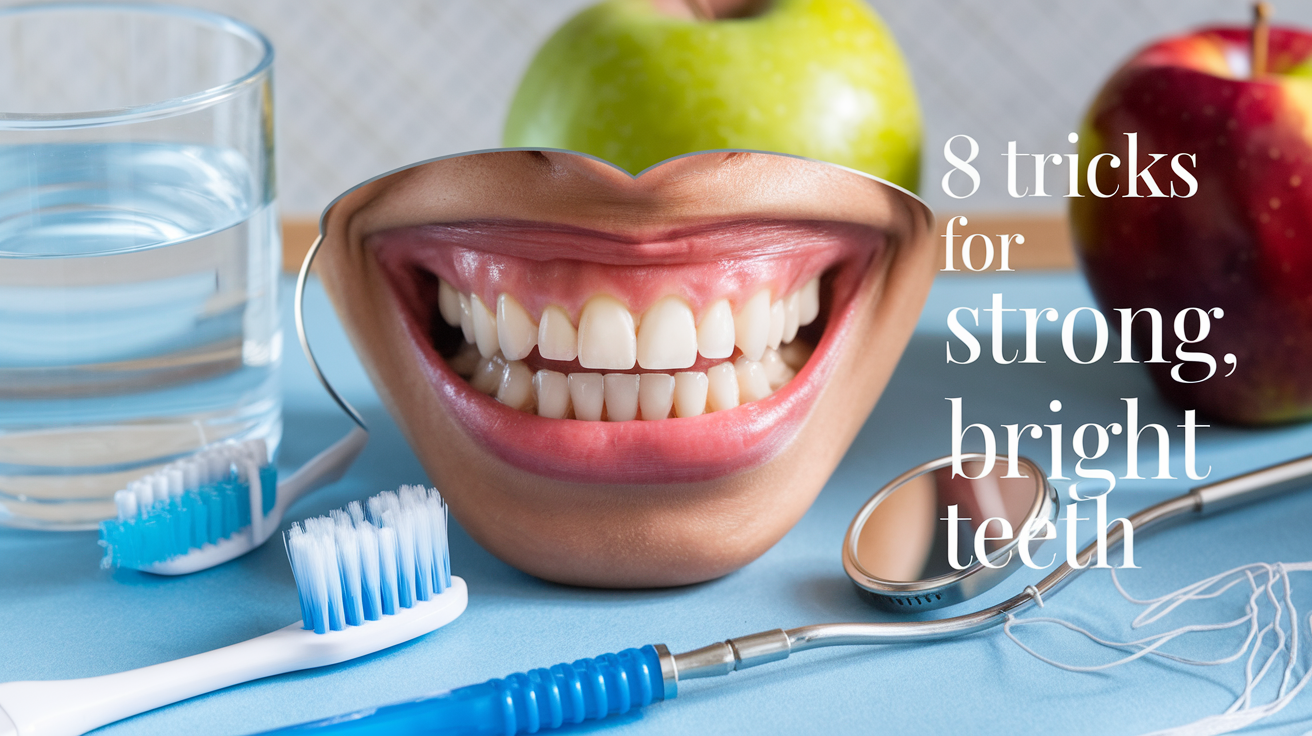
Healthy teeth and gums contribute significantly to your overall wellbeing. It’s essential to prioritize the care of your teeth and gums.
Teeth and gums require regular attention to prevent issues that could lead to more severe dental problems.
Incorporating techniques that benefit both teeth and gums will enhance your oral hygiene routine.
Understanding brushing techniques for both teeth and gums can drastically improve your oral health.
Are you tired of hiding your smile or feeling self-conscious about your teeth? 😬 You’re not alone. Millions of people struggle with dental issues, from yellowing teeth to gum problems. But what if we told you that achieving a dazzling, healthy smile isn’t as complicated as you might think?
Imagine confidently flashing your pearly whites in photos, enjoying your favorite foods without worry, and never hesitating to laugh out loud. 😄 It’s time to unlock the secrets to strong, bright teeth and healthy gums. In this blog post, we’ll reveal 8 proven tricks that will revolutionize your oral care routine and boost your dental health to new heights.
From mastering the art of brushing to harnessing the power of natural whitening methods, we’ve got you covered. Get ready to discover simple yet effective techniques that will transform your smile and leave you wondering why you didn’t start sooner. Let’s dive into these game-changing strategies that will have you grinning from ear to ear!
Brushing Techniques for Optimal Oral Health
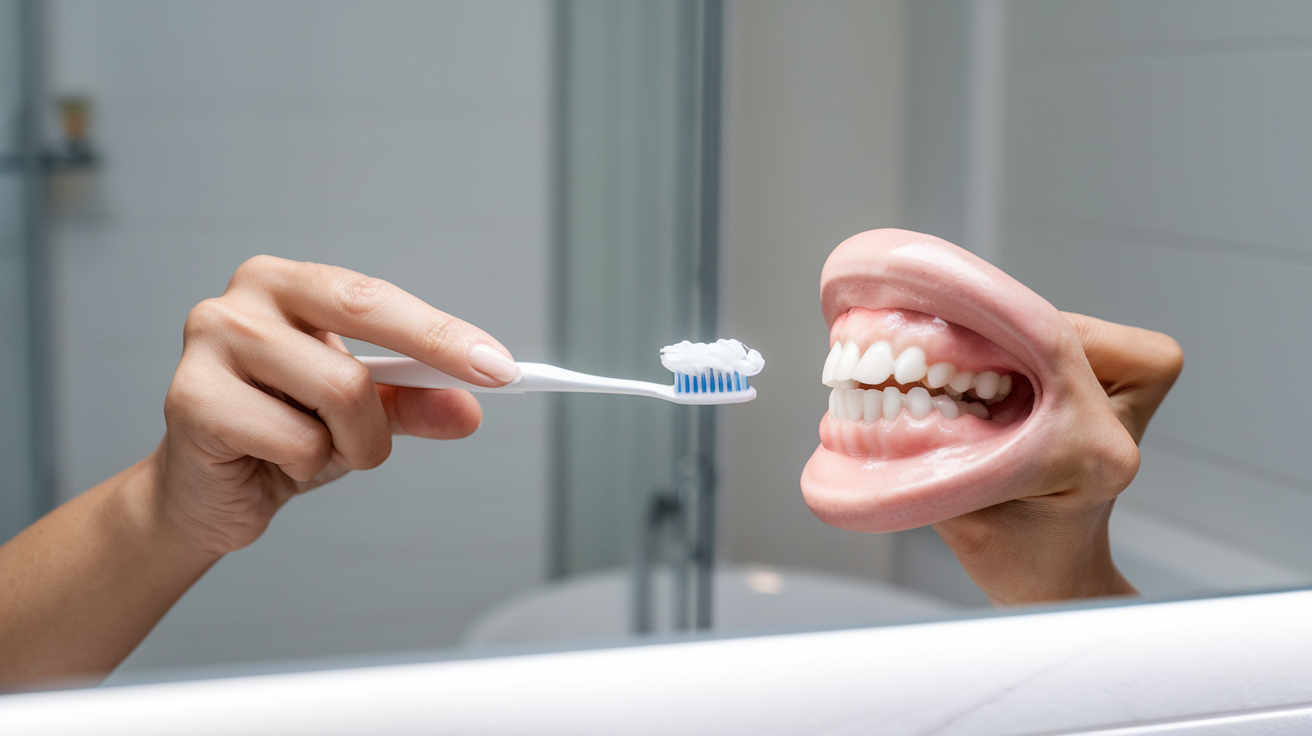
Choose the right toothbrush
Selecting the appropriate toothbrush is crucial for maintaining optimal oral health. Consider the following factors when choosing your toothbrush:
- Bristle type: Soft bristles are generally recommended as they effectively clean teeth without damaging enamel or gums.
- Head size: A smaller head allows better access to hard-to-reach areas of your mouth.
- Handle grip: Ensure the handle is comfortable to hold and maneuver.
- Manual vs. electric: Both can be effective when used correctly, but electric toothbrushes may provide more consistent cleaning.
| Toothbrush Type | Pros | Cons |
|---|---|---|
| Manual | Affordable, portable, no charging needed | Requires proper technique |
| Electric | Consistent cleaning, built-in timer, pressure sensors | More expensive, needs charging |
Master the proper brushing motion
Teeth and gum care should be a priority in your daily routine, ensuring a bright and healthy smile.
To effectively clean your teeth and gums, follow these steps:
- Hold your toothbrush at a 45-degree angle to your gums.
- Use gentle, circular motions to brush the outer surfaces of your teeth.
- Clean the inner surfaces by tilting the brush vertically and using up-and-down strokes.
- Brush the chewing surfaces with back-and-forth motions.
- Don’t forget to brush your tongue to remove bacteria and freshen breath.
Time your brushing sessions
Proper brushing duration is essential for thorough cleaning:
- Aim to brush for at least two minutes, twice a day.
- Divide your mouth into four quadrants and spend 30 seconds on each.
- Use a timer or listen to a short song to ensure you brush for the full two minutes.
- Some electric toothbrushes have built-in timers to help you track your brushing time.
Focus on often-missed areas
Pay special attention to these commonly overlooked areas:
When focusing on your teeth and gums, be sure to use techniques that enhance their health and appearance.
- Back molars: These teeth are prone to decay due to their location and uneven surfaces.
- Gum line: Gently brush along the gum line to remove plaque and prevent gingivitis.
- Behind front teeth: Use the tip of your toothbrush to clean behind your upper and lower front teeth.
- Wisdom teeth: If you have them, ensure you reach these hard-to-access teeth.
By implementing these brushing techniques, you’ll significantly improve your oral health routine. Remember that consistency is key – brush twice daily and maintain proper technique to keep your teeth and gums strong and healthy. In the next section, we’ll explore the importance of flossing and how it complements your brushing routine for comprehensive oral care.
The Power of Flossing
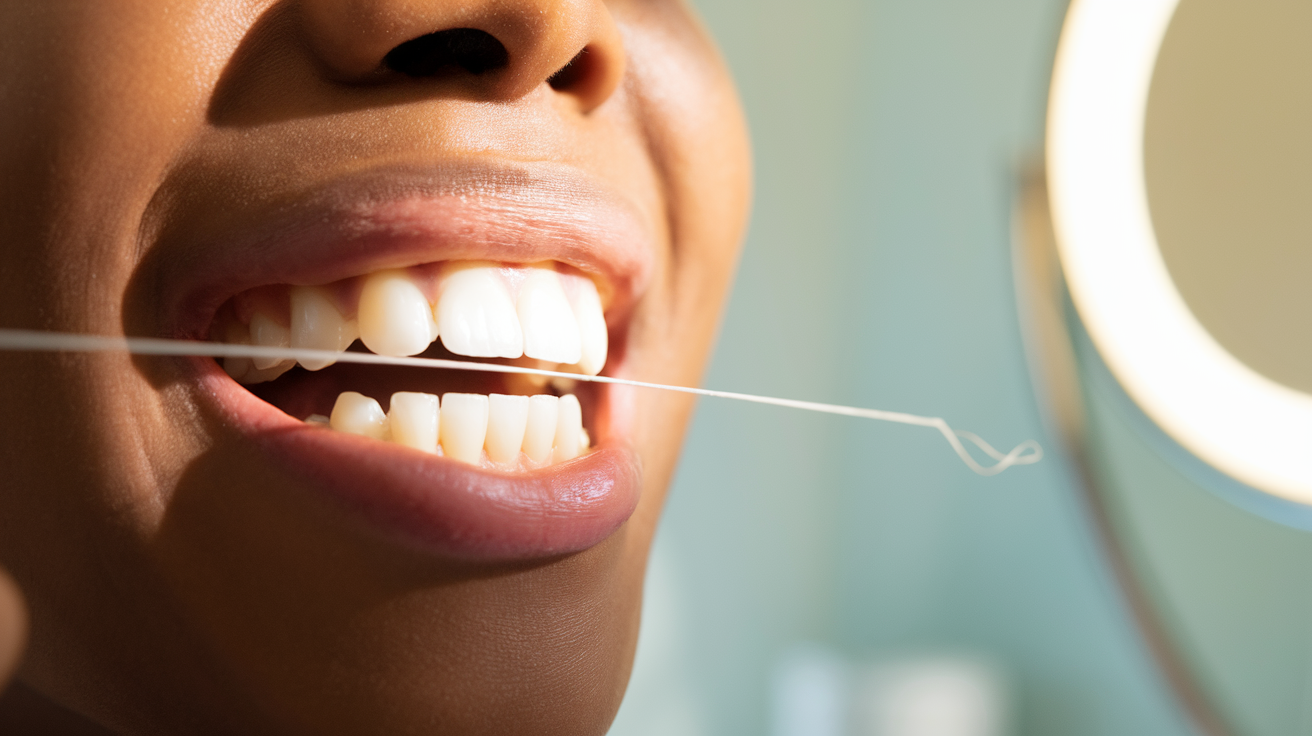
Select the best flossing method for you
When it comes to flossing, one size doesn’t fit all. Choosing the right flossing method can make a significant difference in your oral health routine. Here are some popular flossing options to consider:
- Traditional string floss
- Dental tape
- Floss picks
- Water flossers
- Interdental brushes
| Flossing Method | Pros | Cons | Best For |
|---|---|---|---|
| Traditional string floss | Inexpensive, effective | Requires dexterity | Most people |
| Dental tape | Gentle on gums, good for wide spaces | May be too thick for tight spaces | Those with sensitive gums |
| Floss picks | Convenient, easy to use | Less control, more plastic waste | On-the-go flossing |
| Water flossers | Gentle, good for braces | More expensive, requires electricity | People with braces or implants |
| Interdental brushes | Effective for large gaps | Not suitable for tight spaces | Those with wide interdental spaces |
Experiment with different methods to find the one that works best for you and your unique dental needs.
Learn the correct flossing technique
Mastering the proper flossing technique is crucial for effective plaque removal and maintaining optimal oral health. Follow these steps for a thorough floss:
- Use about 18 inches of floss, winding most around your middle fingers.
- Hold the floss tightly between your thumbs and forefingers.
- Guide the floss gently between your teeth using a rubbing motion.
- When the floss reaches the gum line, curve it into a C shape against one tooth.
- Slide it into the space between the gum and the tooth.
- Rub the side of the tooth, moving the floss away from the gum with up and down motions.
- Repeat this process for each tooth, using a clean section of floss as you move.
Remember to be gentle to avoid damaging your gums. If you’re new to flossing, it’s normal for your gums to bleed slightly at first. This should improve with regular flossing.
Make flossing a daily habit
Regular flosser use is crucial for maintaining the health of both your teeth and gums.
Incorporating flossing into your daily routine is essential for maintaining strong, healthy teeth and gums. Here are some tips to help you make flossing a consistent habit:
- Set a specific time: Floss at the same time every day, such as right before bed or after breakfast.
- Keep floss visible: Store your floss in a visible spot as a reminder.
- Use a habit tracker: Mark each day you floss on a calendar or habit-tracking app.
- Pair it with another habit: Floss immediately after brushing your teeth.
- Start small: Begin with flossing just one tooth if you’re struggling to establish the habit.
By making flossing a non-negotiable part of your daily oral care routine, you’ll significantly improve your dental health and reduce the risk of gum disease and tooth decay. Remember, consistency is key when it comes to effective flossing.
Now that you understand the importance of flossing and how to do it correctly, let’s explore another crucial aspect of maintaining oral hygiene: the use of mouthwash.
Rinse and Protect with Mouthwash
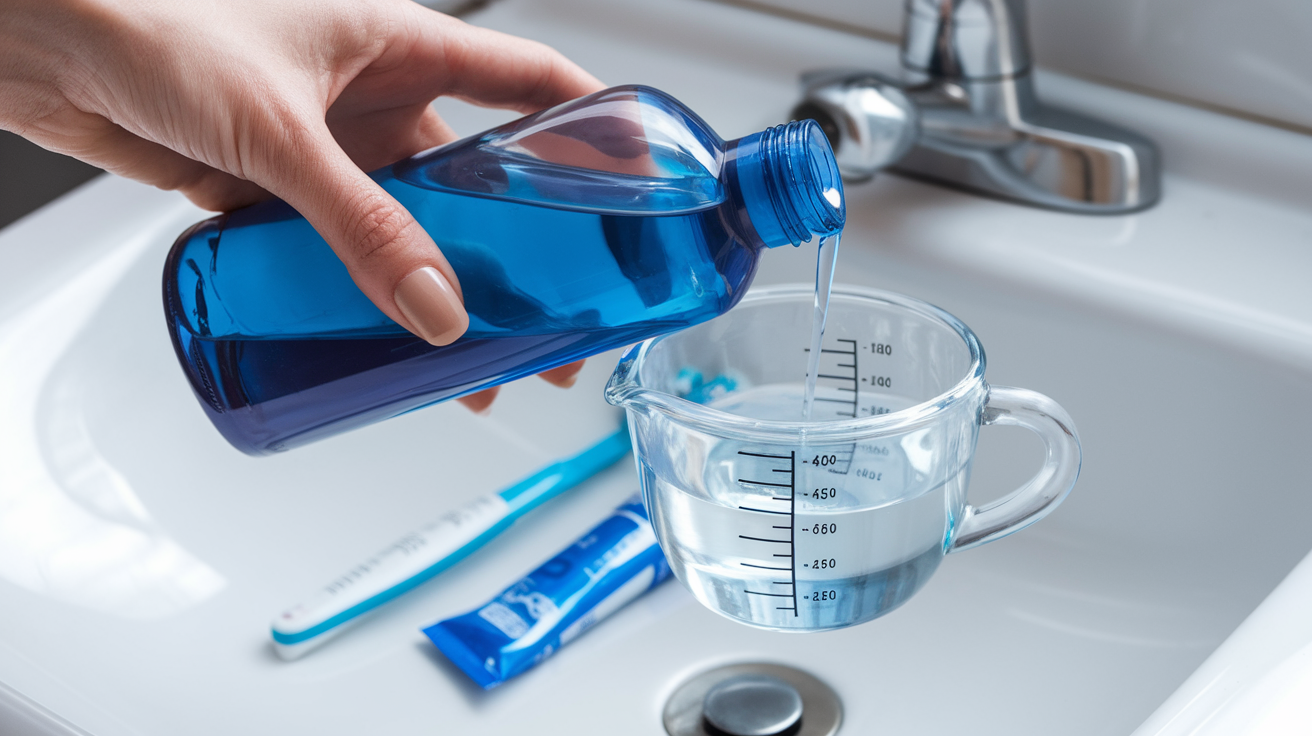
Choose the right mouthwash for your needs
Selecting the appropriate mouthwash is crucial for maintaining optimal oral health. With numerous options available, it’s essential to understand your specific needs and choose accordingly. Here’s a comparison of different types of mouthwash:
| Type | Main Benefits | Best For |
|---|---|---|
| Fluoride | Strengthens enamel, prevents decay | Cavity-prone individuals |
| Antiseptic | Kills bacteria, reduces plaque | General oral hygiene |
| Cosmetic | Freshens breath | Temporary breath freshening |
| Natural | Chemical-free, gentle | Sensitive mouths, eco-conscious users |
| Whitening | Removes surface stains | Those seeking brighter teeth |
Consider your primary oral health concerns when selecting a mouthwash. If you’re prone to cavities, a fluoride mouthwash might be your best bet. For those battling bad breath or gum issues, an antiseptic mouthwash could be more beneficial.
Incorporate mouthwash into your routine
To maximize the benefits of mouthwash, it’s crucial to use it correctly and consistently. Here are some tips for incorporating mouthwash into your daily oral care routine:
- Use mouthwash after brushing and flossing
- Measure the correct amount as per the product instructions
- Swish for at least 30 seconds, ensuring it reaches all areas of your mouth
- Avoid eating or drinking for at least 30 minutes after use
- Use mouthwash at least once daily, preferably before bed
Remember, mouthwash is a supplement to, not a replacement for, brushing and flossing. It’s most effective when used as part of a comprehensive oral care routine.
Understand the benefits of different mouthwash types
Different mouthwash types offer various benefits beyond just freshening breath. Here’s a breakdown of the advantages of common mouthwash types:
- Fluoride mouthwashes: These help remineralize tooth enamel, making teeth more resistant to acid attacks from plaque bacteria and sugars. They’re particularly beneficial for those at high risk of tooth decay.
- Antiseptic mouthwashes: Containing ingredients like chlorhexidine or cetylpyridinium chloride, these are effective at reducing plaque buildup and fighting gum disease. They’re often recommended for those with gingivitis or recovering from oral surgery.
- Whitening mouthwashes: While not as effective as professional treatments, these can help maintain the results of whitening procedures and gradually remove surface stains.
- Natural mouthwashes: Often containing ingredients like tea tree oil or aloe vera, these provide a gentler alternative for those with sensitive mouths or those preferring natural products.
By understanding these benefits, you can choose a mouthwash that complements your oral care needs and enhances your overall dental health. Remember, while mouthwash is a valuable tool in your oral care arsenal, it works best in conjunction with regular brushing, flossing, and dental check-ups. In the next section, we’ll explore how your diet can significantly impact your dental health, providing you with even more ways to maintain strong, bright teeth.
Diet for Dental Health
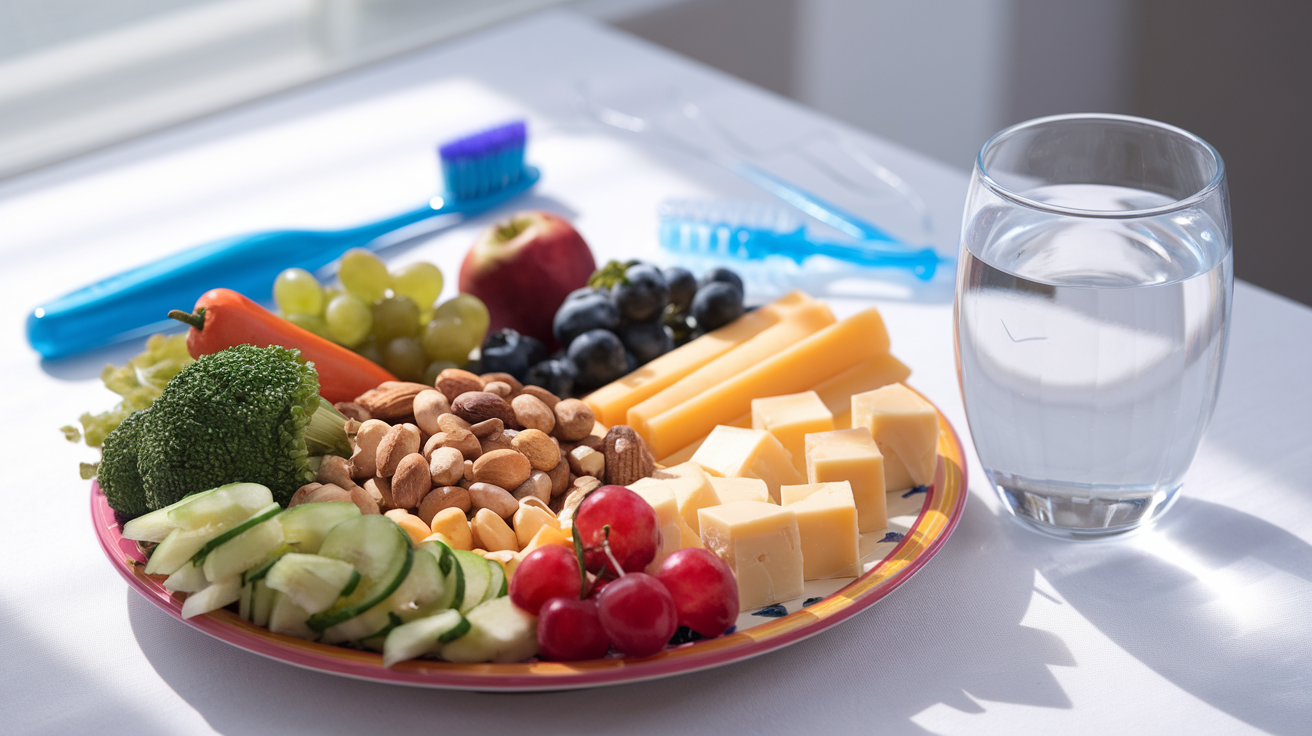
Consume calcium-rich foods
A balanced diet rich in calcium is essential for maintaining strong teeth and healthy gums. Calcium is a crucial mineral that helps build and maintain strong tooth enamel, the protective outer layer of your teeth. Here are some calcium-rich foods to incorporate into your diet:
- Dairy products (milk, cheese, yogurt)
- Leafy green vegetables (kale, spinach, collard greens)
- Sardines and canned salmon (with bones)
- Fortified plant-based milk alternatives
- Almonds and Brazil nuts
| Food Item | Calcium Content (per 100g) |
|---|---|
| Parmesan cheese | 1184 mg |
| Plain yogurt | 121 mg |
| Kale | 150 mg |
| Canned sardines | 382 mg |
| Almonds | 269 mg |
Limit sugary and acidic foods
Sugary and acidic foods can wreak havoc on your teeth, leading to tooth decay and enamel erosion. To protect your dental health, consider reducing your intake of:
- Carbonated soft drinks
- Citrus fruits and juices
- Candy and sweets
- Processed snacks high in sugar
- Energy drinks and sports beverages
When you do consume these foods, rinse your mouth with water afterward and wait at least 30 minutes before brushing to avoid further damage to weakened enamel.
Eat crunchy fruits and vegetables
Crunchy fruits and vegetables are nature’s toothbrushes. They help clean your teeth and stimulate saliva production, which is essential for neutralizing acids and remineralizing tooth enamel. Some excellent choices include:
- Apples
- Carrots
- Celery
- Cucumbers
- Bell peppers
These foods also provide essential vitamins and minerals that contribute to overall oral health.
Stay hydrated for a healthy mouth
Proper hydration is crucial for maintaining a healthy mouth. Water helps:
- Rinse away food particles and bacteria
- Neutralize acids in the mouth
- Prevent dry mouth, which can lead to tooth decay
- Stimulate saliva production
Aim to drink at least 8 glasses of water per day. If you’re not a fan of plain water, try infusing it with cucumber, mint, or lemon for a refreshing twist.
Now that we’ve covered the importance of diet for dental health, let’s explore some natural teeth whitening methods that can complement your healthy eating habits and help you achieve a brighter smile.
Natural Teeth Whitening Methods
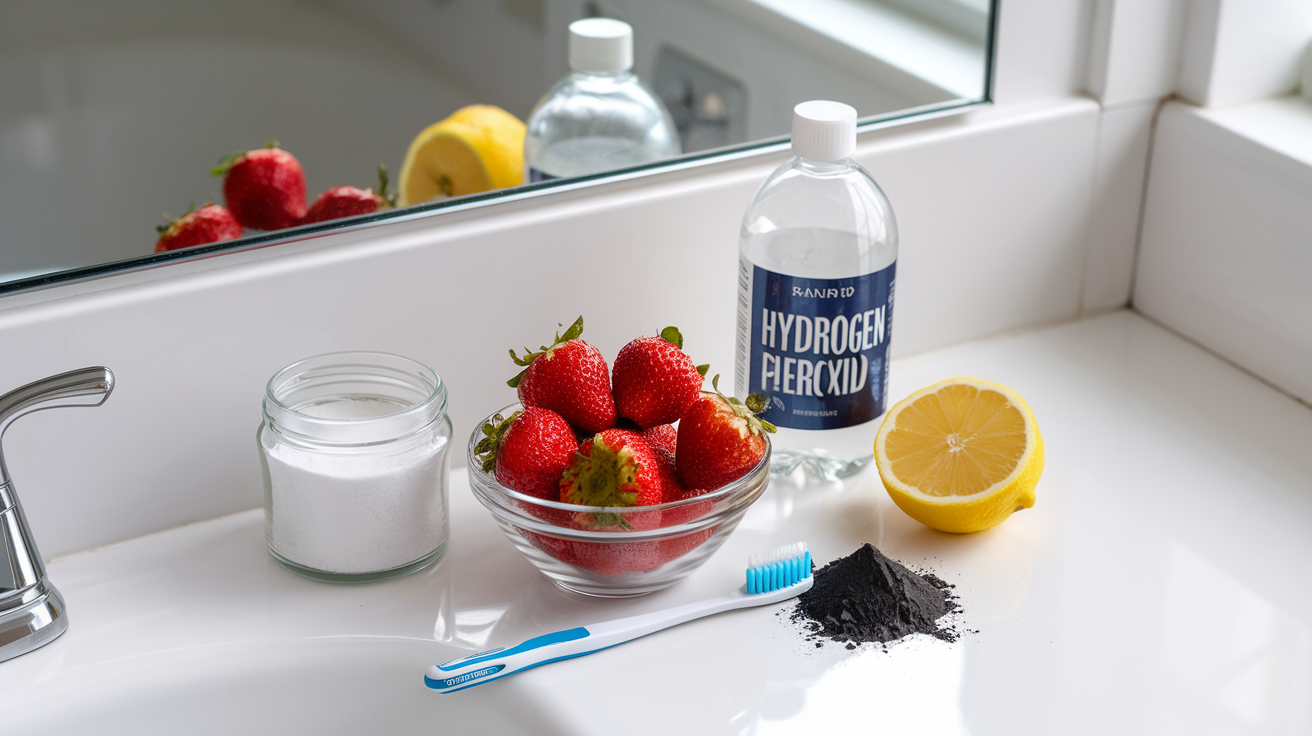
Oil pulling for brighter teeth
Oil pulling is an ancient Ayurvedic practice that has gained popularity in recent years for its potential dental health benefits, including teeth whitening. This natural method involves swishing oil in your mouth for several minutes to remove bacteria and toxins.
To practice oil pulling:
- Choose a high-quality oil (coconut, sesame, or sunflower)
- Take 1 tablespoon of oil in your mouth
- Swish the oil around for 15-20 minutes
- Spit out the oil (do not swallow)
- Rinse your mouth with warm water
- Brush your teeth as usual
While scientific evidence is limited, many people report noticeable improvements in tooth color and overall oral health after consistent oil pulling.
Use baking soda as a gentle abrasive
Baking soda, or sodium bicarbonate, is a mild abrasive that can help remove surface stains from teeth. Its alkaline nature also helps neutralize acids in the mouth, potentially reducing the risk of tooth decay.
To use baking soda for teeth whitening:
- Mix 1 teaspoon of baking soda with a few drops of water to form a paste
- Apply the paste to your toothbrush
- Brush gently for 2 minutes
- Rinse thoroughly
It’s important to note that while baking soda can be effective, it should not replace regular toothpaste. Use this method no more than twice a week to avoid damaging your tooth enamel.
Hydrogen peroxide rinse
Hydrogen peroxide is a mild bleaching agent that can help whiten teeth. It’s often found in commercial whitening products, but you can also use it as a simple at-home rinse.
To create a hydrogen peroxide rinse:
- Mix equal parts 3% hydrogen peroxide and water
- Swish the solution in your mouth for 30 seconds
- Spit out and rinse with plain water
- Use no more than 2-3 times per week
Here’s a comparison of these natural teeth whitening methods:
| Method | Main Ingredient | Frequency | Pros | Cons |
|---|---|---|---|---|
| Oil Pulling | Natural oils | Daily | Removes toxins, may improve overall oral health | Time-consuming, limited scientific evidence |
| Baking Soda | Sodium bicarbonate | 1-2 times/week | Gentle abrasive, neutralizes acids | Can be harsh if overused |
| Hydrogen Peroxide | H2O2 | 2-3 times/week | Mild bleaching effect | May cause sensitivity, not suitable for long-term use |
Your diet plays a vital role in the health of your teeth and gums. Make sure to include plenty of nutrients.
While these natural methods can help brighten your smile, it’s essential to maintain a consistent oral care routine. Brushing twice daily with fluoride toothpaste, flossing, and using mouthwash are crucial for maintaining strong, healthy teeth. Remember that natural whitening methods may take longer to show results compared to professional treatments, but they can be a gentler alternative for those with sensitive teeth.
Regular Dental Check-ups
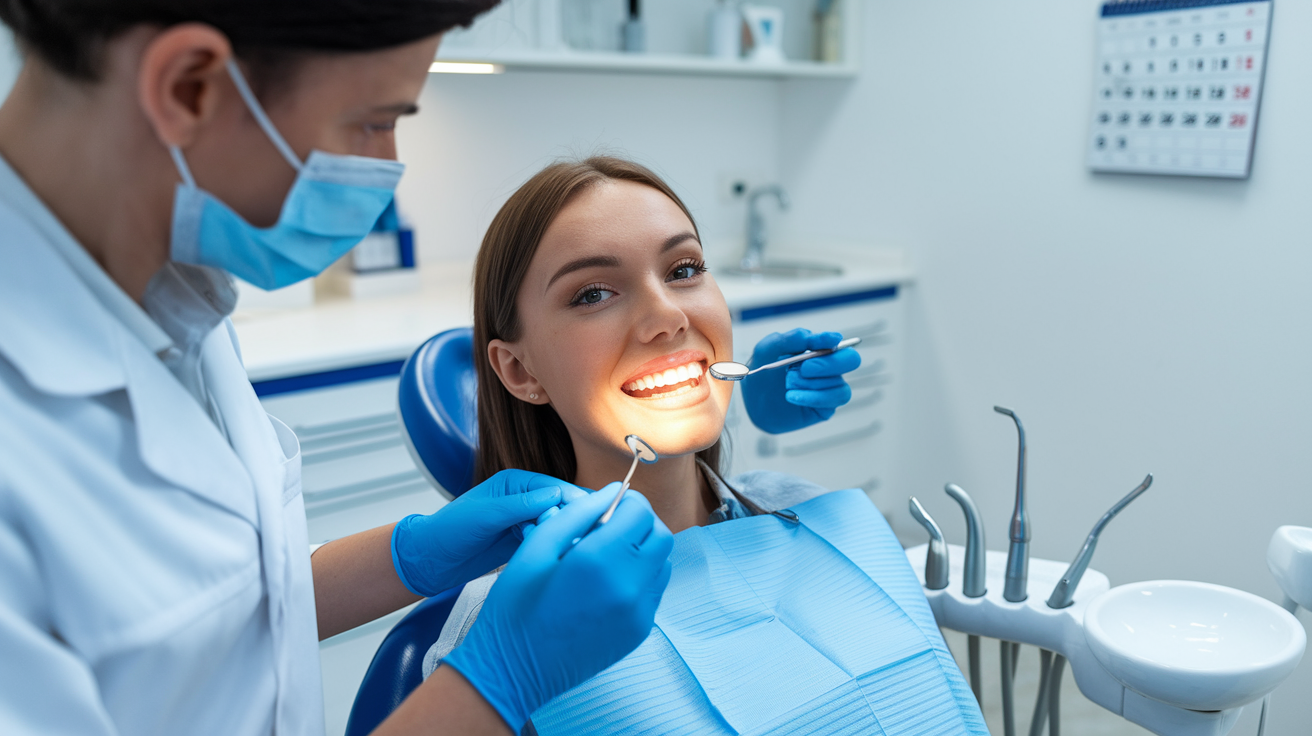
Schedule bi-annual cleanings
Regular dental check-ups are a cornerstone of maintaining excellent oral health. Scheduling bi-annual cleanings with your dentist is crucial for preventing dental issues and maintaining a healthy smile. These appointments typically involve:
- Professional cleaning
- Comprehensive oral examination
- X-rays (when necessary)
- Oral cancer screening
By adhering to a twice-yearly cleaning schedule, you allow your dentist to remove plaque and tartar buildup that regular brushing and flossing can’t eliminate. This proactive approach significantly reduces the risk of developing cavities, gum disease, and other oral health problems.
| Benefits of Bi-annual Cleanings | Consequences of Skipping Check-ups |
|---|---|
| Early detection of issues | Undetected dental problems |
| Professional plaque removal | Increased risk of gum disease |
| Personalized oral care advice | Missed opportunities for education |
| Fresher breath and whiter teeth | Potential for costly treatments |
Address issues early
One of the primary advantages of regular dental check-ups is the ability to address potential issues early. Your dentist can detect problems in their initial stages, often before you experience any symptoms. Early intervention can prevent:
- Tooth decay progression
- Gum disease advancement
- Oral infections
- Jaw problems
By catching and treating these issues early, you can avoid more extensive and expensive treatments down the line. For instance, addressing a small cavity with a simple filling is far less invasive and costly than waiting until a root canal or extraction becomes necessary.
Get professional advice on oral care
During your regular check-ups, you have the opportunity to receive personalized advice from dental professionals. This guidance can be invaluable in improving your at-home oral care routine. Your dentist or hygienist can provide:
- Tailored brushing and flossing techniques
- Recommendations for oral care products
- Advice on diet and lifestyle choices affecting oral health
- Information on the latest dental care technologies
This professional insight helps you make informed decisions about your oral health and ensures that you’re using the most effective methods to maintain strong, bright teeth and healthy gums.
Now that we’ve explored the importance of regular dental check-ups, let’s delve into how quitting harmful habits can further enhance your oral health.
Quit Harmful Habits
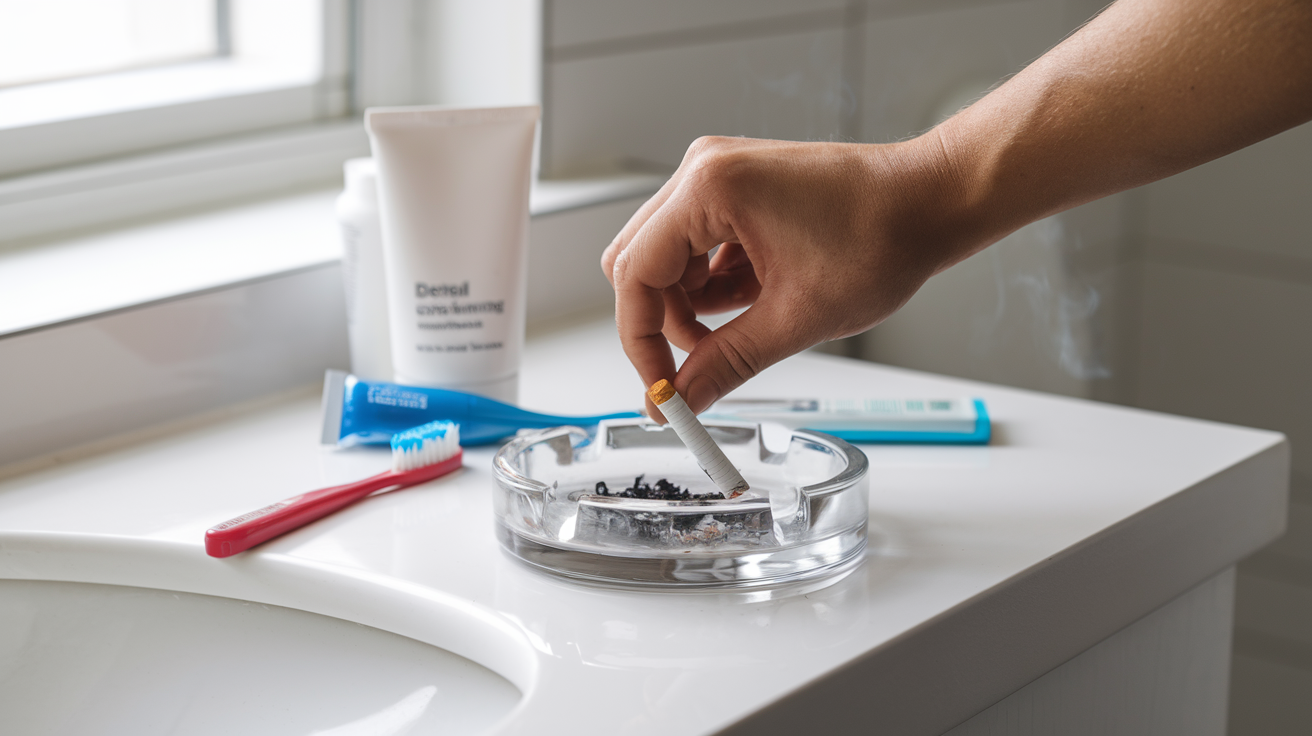
Stop smoking or using tobacco products
Quitting smoking and tobacco use is one of the most significant steps you can take to improve your oral health. Tobacco products have devastating effects on your teeth and gums, leading to a host of dental problems. Here’s why you should consider quitting:
- Stained teeth: Nicotine and tar in tobacco products can cause yellowing and discoloration of teeth
- Increased risk of gum disease and tooth loss
- Delayed healing after dental procedures
- Higher chances of developing oral cancer
To help you quit, consider the following strategies:
- Nicotine replacement therapy (patches, gum, lozenges)
- Prescription medications
- Counseling or support groups
- Gradually reducing tobacco use
- Finding alternative stress-relief methods
Limit alcohol consumption
While moderate alcohol consumption may not significantly impact your oral health, excessive drinking can lead to various dental issues. Here’s why you should consider limiting your alcohol intake:
| Effects of Excessive Alcohol on Oral Health |
|---|
| Dry mouth and reduced saliva production |
| Increased risk of tooth decay |
| Higher chances of gum disease |
| Potential for oral cancer |
To maintain good oral health while enjoying alcohol in moderation:
- Drink water between alcoholic beverages
- Choose lower sugar options
- Rinse your mouth after drinking
- Maintain regular dental check-ups
Avoid teeth grinding
Teeth grinding, also known as bruxism, can cause significant damage to your teeth and jaw. Many people are unaware they grind their teeth, especially during sleep. Here are some signs you might be a teeth grinder:
- Worn down, flattened, or chipped teeth
- Increased tooth sensitivity
- Jaw pain or tightness
- Headaches, particularly in the morning
- Disrupted sleep
To prevent the harmful effects of teeth grinding, consider these solutions:
- Wear a custom-fitted night guard
- Practice stress-reduction techniques like meditation or yoga
- Avoid caffeine and alcohol before bedtime
- Correct misaligned teeth with orthodontic treatment
- Use relaxation exercises for your jaw muscles
By quitting these harmful habits, you’ll not only improve your overall health but also significantly enhance your oral health. Remember, it’s never too late to make positive changes. If you’re struggling with any of these habits, don’t hesitate to seek professional help from your dentist or healthcare provider. They can offer personalized advice and support to help you overcome these challenges and achieve optimal oral health.
Now that we’ve covered how to quit harmful habits, let’s explore some advanced oral care products that can further boost your dental hygiene routine.
Advanced Oral Care Products
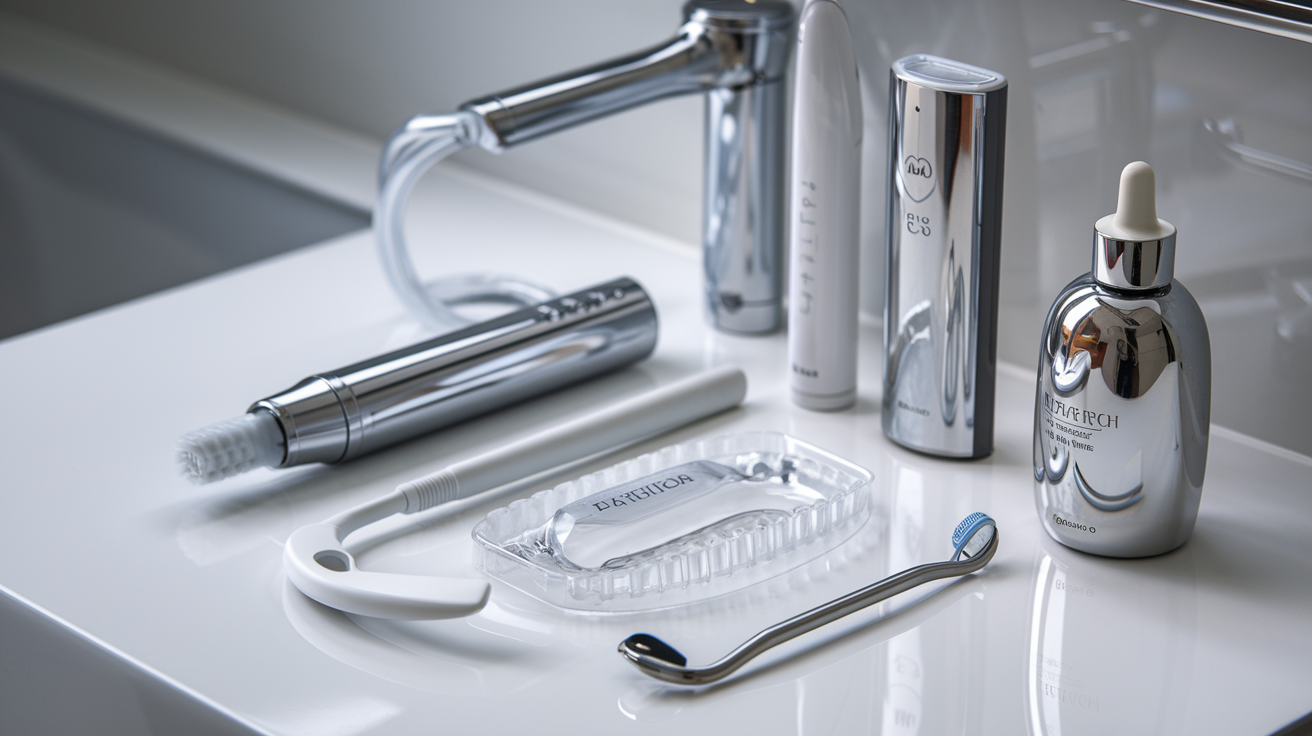
Invest in an electric toothbrush
Natural methods can help enhance the appearance of your teeth and gums, contributing to a radiant smile.
Electric toothbrushes have revolutionized oral care, offering superior cleaning power compared to manual brushes. These devices use oscillating or sonic technology to remove plaque more effectively, reaching areas that are often missed with traditional brushing.
| Feature | Manual Toothbrush | Electric Toothbrush |
|---|---|---|
| Cleaning Power | Limited | High-powered |
| Pressure Control | Manual | Often built-in |
| Timer | None | Usually included |
| Cost | Low initial cost | Higher initial cost, long-term value |
| Effectiveness | Good | Excellent |
Many electric toothbrushes come with features like pressure sensors and timers, ensuring you brush for the recommended two minutes without damaging your gums. The investment in an electric toothbrush can lead to improved oral health and potentially fewer dental issues in the long run.
Try water flossers for deep cleaning
Water flossers, also known as oral irrigators, offer a modern approach to interdental cleaning. These devices use a pressurized stream of water to remove food particles and plaque between teeth and along the gumline.
Benefits of water flossers include:
- More effective than traditional flossing for some users
- Gentler on sensitive gums
- Easier to use for people with braces or dental work
- Can reach areas difficult to access with string floss
While not a complete replacement for traditional flossing, water flossers can be an excellent addition to your oral care routine, especially for those who struggle with regular flossing.
Use teeth-strengthening toothpaste
Specialized toothpastes can play a crucial role in maintaining and improving dental health. Look for toothpastes containing:
- Fluoride: Helps remineralize tooth enamel
- Hydroxyapatite: Promotes enamel repair
- Potassium nitrate: Reduces tooth sensitivity
- Stannous fluoride: Offers antibacterial properties
These ingredients work together to strengthen teeth, prevent cavities, and protect against acid erosion. When choosing a toothpaste, consider your specific dental needs and consult with your dentist for personalized recommendations.
Consider dental probiotics
Dental probiotics are a relatively new addition to oral care products. These beneficial bacteria can help maintain a healthy balance in your mouth’s microbiome, potentially reducing the risk of cavities, gum disease, and bad breath.
Probiotic strains specifically formulated for oral health can:
- Compete with harmful bacteria for space and nutrients
- Produce substances that inhibit the growth of cavity-causing bacteria
- Help neutralize acidic conditions in the mouth
While research is ongoing, incorporating dental probiotics into your routine may offer an additional layer of protection for your teeth and gums.
Now that we’ve explored these advanced oral care products, it’s important to remember that they should complement, not replace, good oral hygiene habits. In the next section, we’ll discuss the importance of quitting harmful habits that can negatively impact your dental health.

Maintaining strong, bright teeth and healthy gums is achievable through a combination of proven techniques and lifestyle choices. By implementing proper brushing techniques, incorporating flossing into your daily routine, and using mouthwash regularly, you can significantly improve your oral health. A balanced diet rich in teeth-friendly foods, along with natural whitening methods, can further enhance your smile.
Remember, professional care is crucial for long-term dental health. Schedule regular check-ups with your dentist, and don’t hesitate to ask about advanced oral care products that may benefit your specific needs. By quitting harmful habits and embracing these proven tricks, you’ll be well on your way to achieving and maintaining a strong, bright, and healthy smile for years to come.
Regular dental visits ensure your teeth and gums remain in optimal health, allowing you to maintain a bright smile.
Focus on the relationship between your teeth and gums for a holistic approach to oral health.
Implementing strategies that benefit both your teeth and gums will lead to long-term success in maintaining oral health.
Share this content:

[…] Top 5 strategies improve gum health and teeth stability. […]